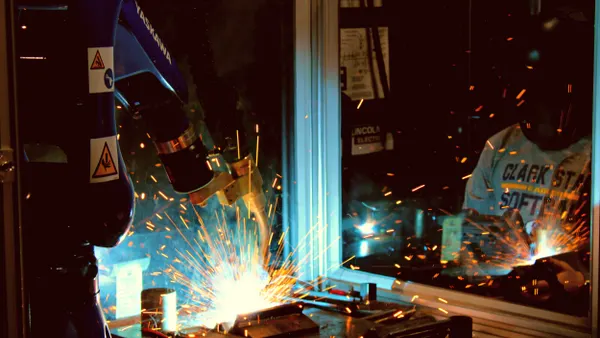The era of classroom-only training is over.
Continuous learning, for workers and businesses alike, is the model that is most likely to future-proof organizations and their staff. But shifting to that model will require more than prepackaged information. It demands a learning journey tailored to each worker.
With few exceptions, learning and development is moving toward personalized training that meets individual needs, learning styles and ambitions. The real challenge is: How can employers actually do that?
It begins with a baseline
The journey of a million miles may begin with a single step, but learning journeys begin with baseline information. Train employees on what they already know, and they'll drop off from boredom. Train far above their pay grade and they'll be lost and frustrated. For employers, the first step to continuous learning is to obtain a baseline of understanding.
Assessment tools can help, but modern learning platforms can collect important baseline information to determine employee skill level, Massimo Canonico, director of solutions engineering at Docebo, told HR Dive in an email. As employees interact with the content, employers can obtain a range of insights on strengths and weaknesses. "All of these data points help enhance executives' understanding of where employees stand on their individual learning paths and what resources they need to improve and continue moving forward," he said.
Many roles require assessments as part of the interview process, Julie Emerson Gurican, senior director of people at BenchPrep, told HR Dive in an email. This step can gauge skills and help a manager think ahead for an onboarding and training plan. "Based on where one tests out," she said, "the manager can thoughtfully assess where one is at in their learning of the job and build out training and development based on that person's individual skillset."
For professional and career development, Gurican said that BenchPrep encourages employees to be the driver of their own careers: "We ask them to write their own individual development plan including where they want to go or what they want to accomplish. Together with their manager, they can figure out where they are in their path to accomplish their goals."
The path to learning
Once a baseline is understood, employers then have to build the path forward — and this starts with creating a culture of learning.
Maria Ho, associate director of research for ATD, told HR Dive that businesses can create a culture of learning where knowledge sharing and applying new skills is encouraged. ATD found that creating personalized development plans for employees is a best practice, usually with the help of frontline managers.
"It largely goes back to the manager, the relationship and all the peer colleagues helping them at the beginning," David Gilman, executive consultant for leadership professional development at Kaplan Professional, told HR Dive in an email. Employees should feel encouraged to learn at their own pace, rather than constantly feel they must prove themselves, he added.
"Understanding that there is no one-size-fits-all approach to training is the first step to helping workers start on the path to learning," Canonico said. Learning resources should be available at the convenience of the learner, he added. If business isn't capable of adjusting to individual employee preferences, training will never be effective.
The vulnerability issue
Approaching learning may require some finesse, as employees are often fearful of showing their weaknesses. Gilman stresses eliminating the language of weakness and replacing it with improvement. "The word FAIL is very strong," he said, "but it can be an acronym, First Attempt In Learning."
Employers should encourage staff to feel comfortable saying "I don't know how… but I want to learn." For Ho, the manager's attitude is key. "Employees may be more willing to discuss their weaknesses if the individual speaking to the employee (such as their manager) takes a coaching approach. In other words, they listen actively, ask targeted questions, and give the employee feedback that is both targeted and actionable."
Canonico noted that the problem of employee fear could be eliminated with digital learning environments. "In a more formal training environment, it's not uncommon for employees to feel they have to hide their weaknesses or 'fake it' instead of asking questions," he said. But platforms that use AI can track and identify areas for improvement and, with a range of factors, offer solutions at a pace uniquely suited to the learner. "When training is always available and encouraged, employees are more willing to embrace their weaknesses because they know they can fall back on a network of resources that will help them improve," he added.
The road to continuous learning
As employers adopt a continuous learning mindset, they increasingly have access to a variety of assessment tools. Ho suggests interviews with employees, observations of employees on the job, performance reviews from their managers, and tests and quizzes. "[Managers] should also consider what employees express an interest in and employees' goals and ambitions," she said. "Two employees may have the same role and perform similarly right now but have different future career paths in mind."
Figure out what motivates people and where they want to go, Gurican said: "Then work together with them to come up with a plan to get there. The learning happens in between." Learning should be fun and have the employee's best interest in mind, not just the company's.
Canonico points to tech as a solution. "The best way to ensure employees are engaged and responding to learning offerings is to make sure training content is compatible with the devices employees use most — their phones." Mobile learning not only improves an organization's capacity to get the right information to learners at the point of need, but it also allows for continued learning opportunities both inside and outside of the workplace.
After all, learning should be seen as a benefit, not a chore.
"Encouraging employees to leverage training where and when it makes sense to them helps employees view training as a resource, instead of a time-consuming, mandatory commitment," Canonico said.


















